Terminology:
‘Alt’ refers to the ‘Option’ key ( ⌥ )
If you have enabled ‘Use F1, F2, etc. keys as standard function keys’ under ‘Keyboard’ settings in ‘System Preferences’ then omit the ‘Fn’ key from the keyboard shortcuts shown in this article.
- Open the ‘Apple Menu’ by clicking on the Apple icon (
 ) in the Menu Bar, or press ‘Fn’ + ‘Ctrl’ + ‘F2’ to highlight the Apple icon and press ‘Enter’
) in the Menu Bar, or press ‘Fn’ + ‘Ctrl’ + ‘F2’ to highlight the Apple icon and press ‘Enter’ - Click to select ‘System Preferences…’ as shown in Fig 1 or press the down arrow key to highlight it and then press ‘Enter’.
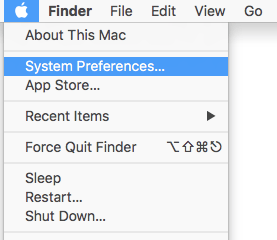
Fig 1 - Click on the ‘Accessibility’ icon or press ‘Tab’ repeatedly (you might need to press ‘Fn’ + ‘Ctrl’ + ‘F7’ first) to cycle through the icons until the ‘Accessibility’ icon is highlighted with a blue border as shown in Fig 2 and then press the ‘Spacebar’.
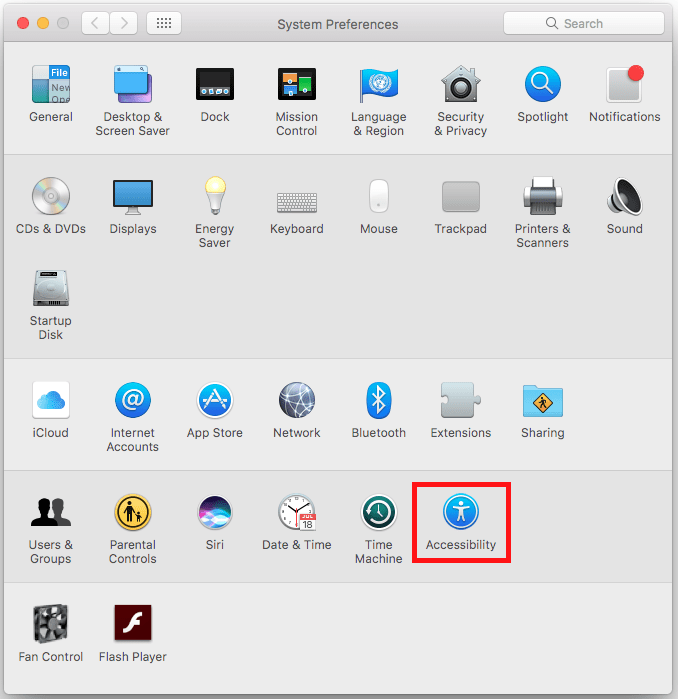
Fig 2 - In the left-hand column, under ‘Interacting’, click on the ‘Mouse’ (or ‘Mouse & Trackpad’ option if you are using a laptop), or press ‘ Fn’ + ‘Ctrl’ + ‘F7’ (you may need to repeat this again) to highlight one of the options in the left hand column and then press the up or down arrow keys to select the ‘Mouse’ or ’Mouse & Trackpad’ option, see Fig 3.
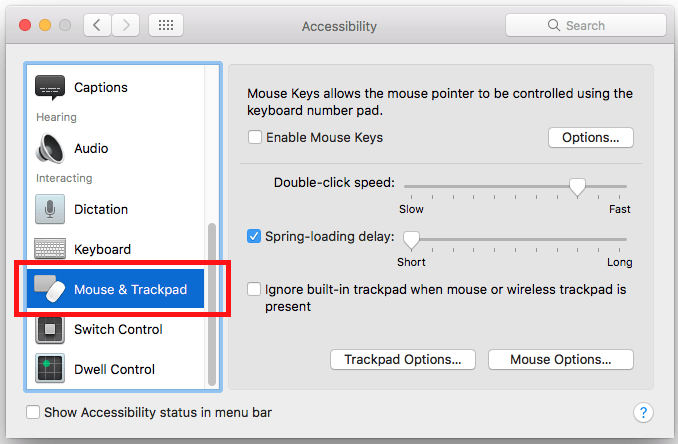
Fig 3 - Click the checkbox next to ‘Enable Mouse Keys’ or press ‘Tab’ until it is highlighted and press ‘Spacebar’, see Fig 4.
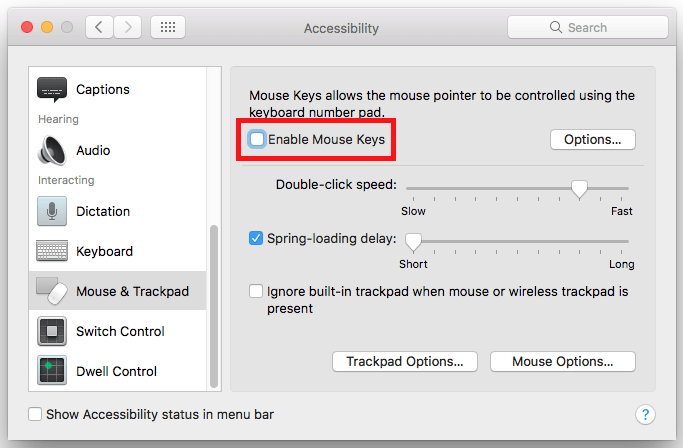
Fig 4
You can change the way the mouse pointer behaves by adjusting the delay before a key press starts moving the mouse pointer (‘Initial Delay’).
You can also change the speed at which the mouse pointer moves (‘Maximum speed’).
- Click the ‘Options’ button or press the ‘Tab’ until the ‘Options’ button is highlighted and then press the ‘Enter’, see Fig 5.
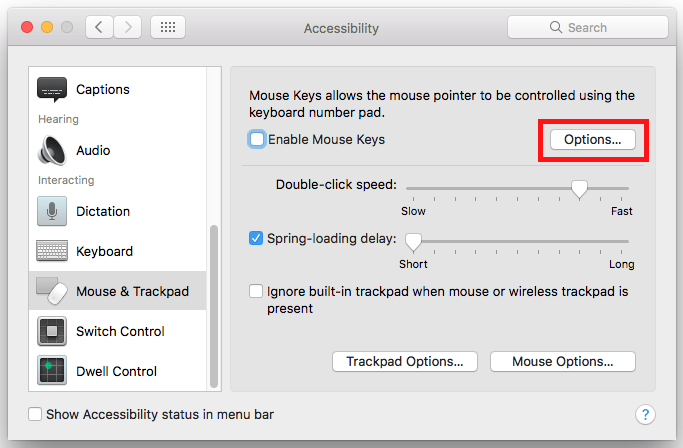
Fig 5 - To change the ‘Initial delay’ (the time between you pressing a key and the cursor moving):
Click on the ‘Initial Delay’ slider – click to the left to shorten the delay or to the right to lengthen the delay, or press ‘Tab’ until the ‘Initial Delay’ slider is highlighted and use the left and right arrow keys to select the delay time, see Fig 6.
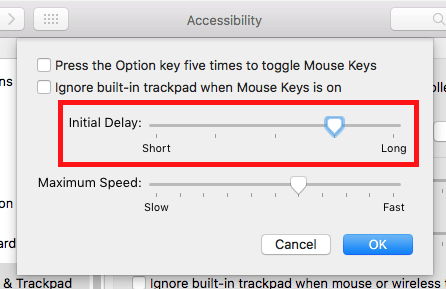
Fig 6 - To change the ‘Maximum Speed’ that the mouse pointer moves:
Click on the ‘Maximum Speed’ slider – click to the left to slow the pointer down or to the right to speed it up, or press ‘Tab’ until the ‘Maximum Speed’ slider is selected and use the left and right arrow keys to choose the speed, see Fig 7.
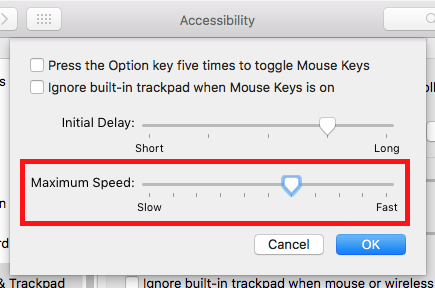
Fig 7 - If you’d like to have the ability to turn the ‘Mouse Keys’ functionality on or off at any time, click the checkbox next to ‘Press the Option key five times to toggle Mouse Keys’ or press ‘Tab’ until it is highlighted and press ‘Spacebar’, see Fig 8.
Now when you want to turn the ‘Mouse Keys’ feature on or off just press the ‘Option’ key (the ‘Alt’ key) 5 times in a row.
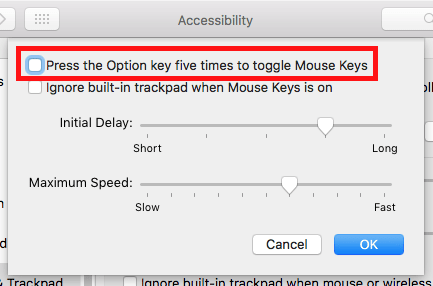
Fig 8 - When you are happy with your settings click ‘OK’ or press ‘Tab’ to highlight the ‘OK’ button and press ‘Enter’.
- Click the ‘Close’ (red) button at the top of the ‘Accessibility’ window or press ‘Cmd’ + ‘W’ to close the window.
Using the keyboard to control the mouse
With ‘Mouse Keys’ turned on, you can move the mouse pointer in different directions by holding down certain keys on the keyboard or on the numeric keypad (if you have one). See Fig 9 for the keys that you can use.
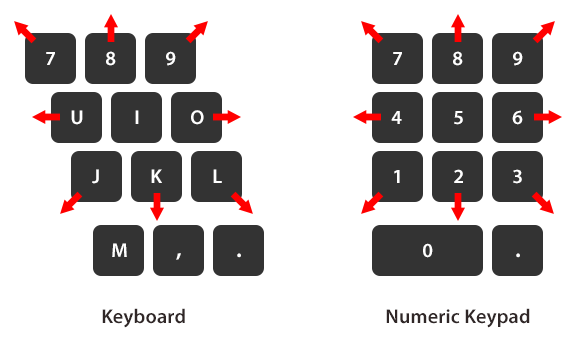
Fig 9
To move the mouse pointer:
Using the keyboard: 7, 8, 9, U, O, J, K, L
Using the numeric keypad: 7, 8, 9, 4, 6, 1, 2, 3
To perform a mouse button click:
Using the keyboard: I
Using the numeric keypad: 5
Press and hold the mouse button:
Using the keyboard: M
Using the numeric keypad: 0 (zero)
To release the mouse button:
Using the keyboard: . (full stop / period)
Using the numeric keypad: . (full stop / decimal point / period)
Note: While the ‘Mouse Keys’ feature is active you can’t use the above keys to enter text.
Note: If this does not work it could be because your computer settings are managed by someone else (an IT department or administrator for example). If this is the case you will need to contact them to access these settings or for further help.
Related information:
Apple’s ‘Mouse Keys’ support page: https://support.apple.com/kb/PH18381?locale=en_GB